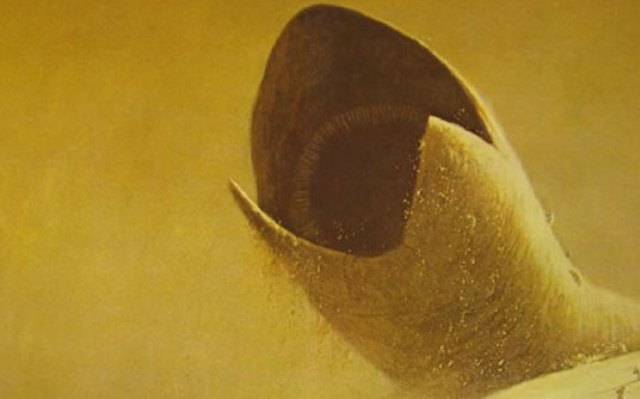The season finale of the immensely popular Breaking Bad is upon us, and we can’t stop thinking about seriously unstable bald men Heisenberg, Blue Sky, and all the crime-fueled craziness that has driven the show ever since a mild-mannered science teacher morphed into the Southwest’s most formidable drug kingpin. The dramatic allure of hard drugs in popular narratives is nothing new, however: from Burroughs’ Naked Lunch to Irvine Welsh’s Trainspotting, to the retroactively fictional James Frey book, A Million Little Pieces, drugs can be almost as important to the narrative as the characters who take them. And of course science fiction and fantasy has a brilliant track record when it comes to speculating on what kinds of memorably mind-bending substances might exist in the future or in alternate dimensions…
Here are ones we’ve all gotten hooked on.
Soma (Brave New World)

In Huxley’s famous novel, the fictional drug Soma has a veriety of effects; mostly, it seems to numb one’s perception of reality and dull one’s emotions. In the book, Huxley describes it as having “all the advantages of Christianity and alcohol, none of their defects.” Soma is an institutionalized drug that essentially runs this future society—in science fiction and fantasy, saying “yes” to drugs is sometimes mandatory. The movie Equilibrium sort of borrowed this idea with a drug called Prozium.
The Spice/Melange (Dune)
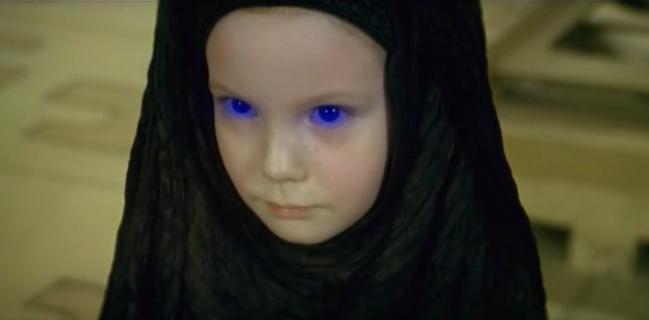
Here’s another culture-defining drug: this narcotic permeates almost every aspect of the Fremen culture insofar as it is primarily responsible for intergalactic commerce. The Spice is not only multi-flavored with a variety of uses, it also serves different functions in the narrative itself. Like all good fictional MacGuffins, the Spice is both the focus of much of the story but also imbedded in the fabric of the story itself. The Spice must flow, not only throughout the galaxy, but also throughout the pages of the book itself, to keep the reader hooked. Also, it makes your eyes blue.
Tek (TekWar)
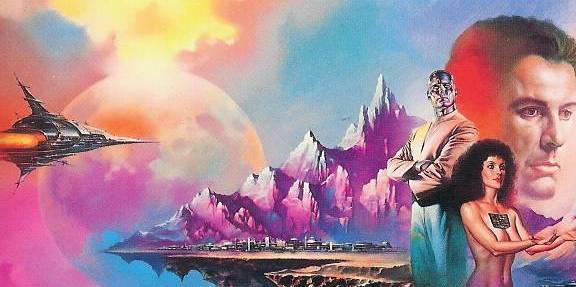
Did William Shatner predict Twitter and Facebook addiction with the fictional cyberpunk drug known as “Tek”? …Maybe. In both the Tek books and television show, this drug took the form of a virtual reality “hit” which seemed to render users completely useless afterwards. The actual manifestation of Tek in the minds of its users seems to usually be generic sexual fantasies. Did anyone ever use Tek just to fantasize about getting a really great job? Or adopting a puppy? Maybe if they had, it would have never been made illegal.
Dust (Babylon 5)
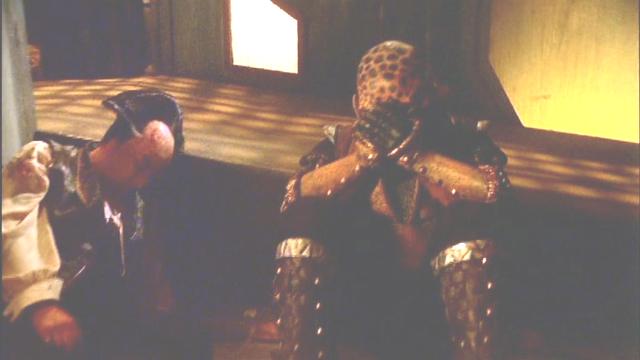
The most we learn about Dust on Babylon 5, other than it being illegal, is that for some reason it turns Narns into telepaths, albeit for a short time. Often, science fiction likes to play with the notion that certain addictive substances can also bring about supernatural abilities. In the B5 universe, Narns are the only species that don’t produce natural telepaths and Dust is the only way for them to access this ability. If telepathy is the norm, just a bonus sixth sense in the future, then this would be like doing a line of coke in order to be able to occasionally see in color. Heavy stuff.
Substance D (A Scanner Darkly)
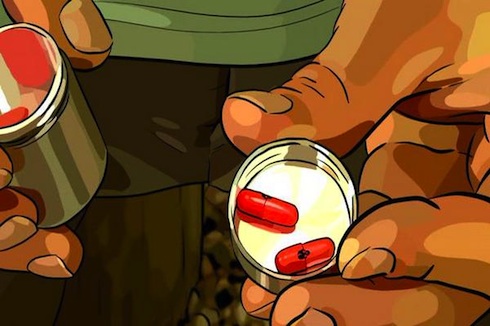
Like many of Philip K. Dick’s fictional drugs, Substance D both darkens and heightens the perceptions its users have of the world. In A Scanner Darkly, the distribution of Substance D is so underground that the police have to go super deep undercover in order to find out who is supplying everyone with Substance D. Every single character seems to be addicted to the drug, making everyone an unreliable narrator. The narrative itself poses the question of what’s worse, here: getting caught with Substance D or being hooked on it forever?
Glitterstim (Spice) + Death Sticks
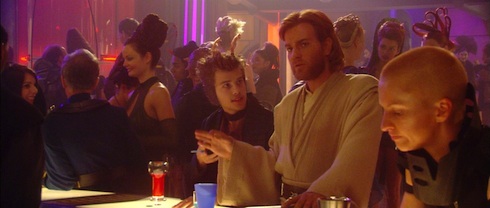
Ever wondered what Han Solo was smuggling when he dumped his whole shipment at the first sign of an Imperial cruiser? It was Spice! Like Dust on Babylon 5, Glitterstim Spice also enables users to read people’s minds. It’s also created by creepy creatures called Energy Spiders, and mining the substance is extremely complicated because of its sensitivity to light. Total darkness is required to harvest it…so when C-3PO bemoaned the notion of being sent to the Spice mines of Kessel, he was really complaining about being in the dark all the time with huge spiders.
As far as Death Sticks, all we really know about them is some dude tries to sell them to Obi-Wan in Attack of the Clones. They sound like a really weak, overt anti-smoking message inserted by Lucas awesome; we need to re-think our whole lives.
Ketracel-white (Star Trek: Deep Space Nine)
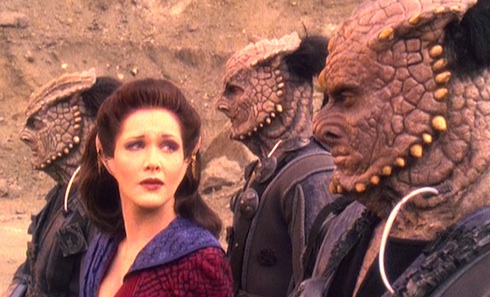
Ketracel-white is a unique drug in the pantheon of science fiction because its primary users are genetically bred to be addicted to it. In order for the Dominion to live up to its scary domineering name, they need an army. The reptilian Jem’Hadar provide this military muscle, but are kept in line by their dependency on the fix regularly provided by their superiors. Institutionalized drug addiction is a scary notion—one also explored by authors like Jonathan Lethem and Philip K. Dick—but when applied to a military complex, it’s made all the more horrifying.
Pan-Galactic Gargle Blaster (The Hitchhiker’s Guide to the Galaxy)
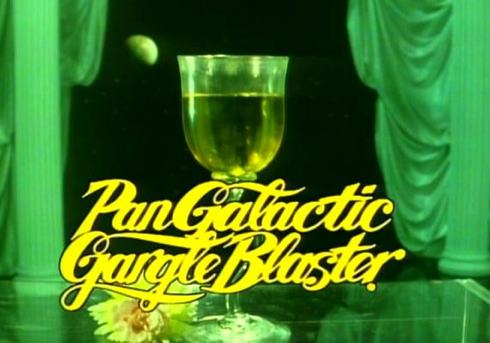
Although conventional wisdom omits alcoholic beverages from lists of hard drugs, we’re giving a special mention to the Pan-Galactic Gargle Blaster on account of it being perhaps the strongest drink in the universe. Its creator, Douglas Adams, likened it to “having your brains smashed out by a slice of lemon wrapped around a large gold brick.” If you survived it, it was probably addictive. You can make it at home and see for yourself.
Retcon (Torchwood)
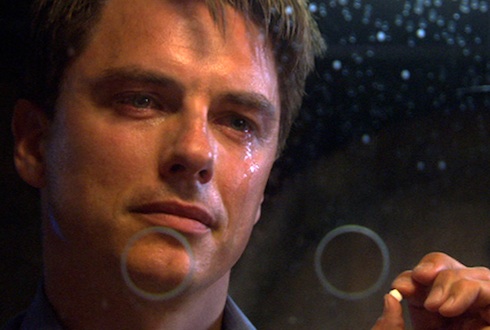
Being a clandestine organization, the Torchwood team frequently needs to make people forget everything they’ve seen or experienced. Enter Compound B67, known more commonly as Retcon. Everyone on Torchwood uses Retcon at some point or another and the potential for abuse is rampant. The drug is also unique in that it’s something you generally administer to someone else (though not always), and that its results (memory manipulation in others) constitute the addictive aspect, rather than the physical effects of drug itself, (although in “They Keep Killing Suzie” we learn that overdosing someone on Retcon can cause psychosis and murderous rage).
Milk-plus (A Clockwork Orange)
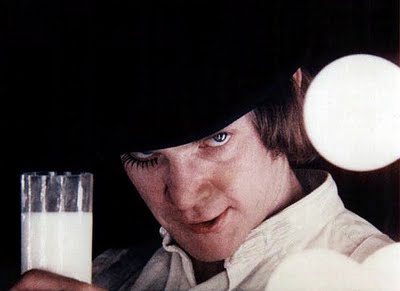
There are a lot of crazy terms in Anthony Burgess’s famous novel, so many that there’s even a glossary in some versions. One of the easier ones to understand is Milk-plus. It’s milk laced with drugs and it makes people act like ultraviolent jerks.
Make (Gun With Occasional Music)
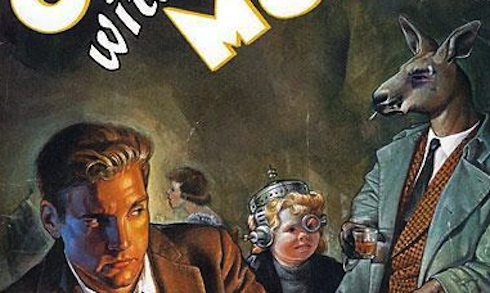
A favorite discussion topic around the Tor.com offices: like Retcon, Make also can cause people to lose memories…but Make is so much more than that. A blend of various types of other future-narcotics such as forgettol and addictol, Make is the ultimate designer drug insofar as each user dictates what goes in their own blend. Further, Make is also an institutionalized, fully legal drug, and users obtain their specific blends at “makeries.” At the end of the novel however, the option of creating your own blend is revoked by the government, rendering this opium of the masses a bona fide tool of societal control.
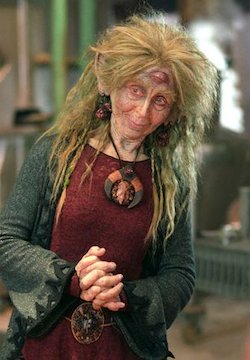 Various Hippie Drugs (Farscape)
Various Hippie Drugs (Farscape)
Farscape’s resident medicine woman, Utu-Noranti Pralatong, was always sticking stuff up people’s noses and blowing powders in the faces of unsuspecting villains. This was probably just as well, since Moya’s crew got themselves into trouble every week (and then some), and sometimes only trippy deception could help them out.
On the other hand, her encouragement of habitual drug use led the show’s main character, John Crichton, to regularly partake of her wares (especially distillate of laka) in order to avoid memories of his derailed romance. Yet again, the drug that gets the primary focus in this show is one associated with forgetting, although this is an intentional fix to forget pain.
Let us know what other fictional potions and powders we should add to the list! And we hope that you enjoyed this post as responsibly as you enjoy the crazy space drug of your choice.
Stubby the Rocket is the voice and mascot of Tor.com. Stubby says say no to space drugs but damned if you can tell.










